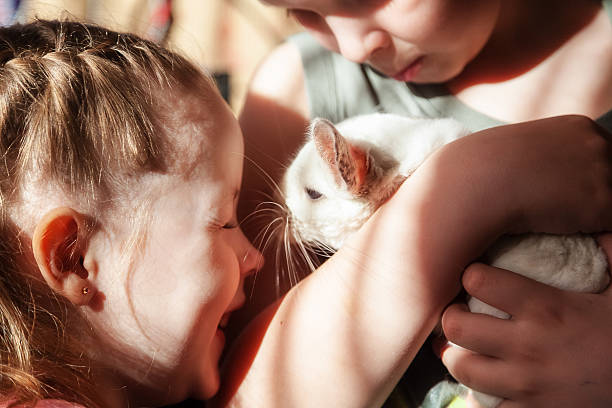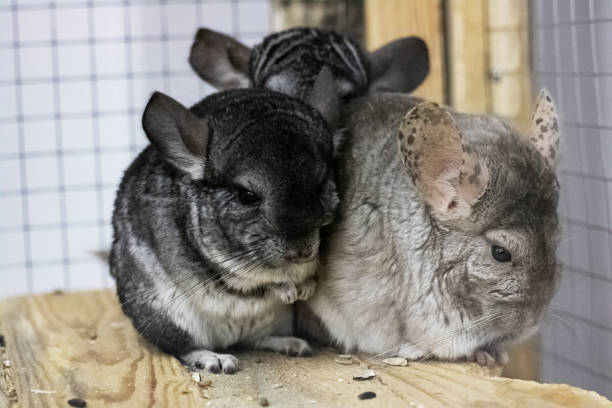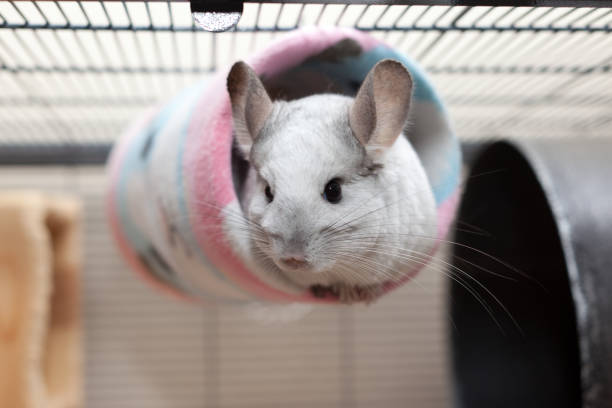Chinchillas vs. Viscachas – What Sets These High-Altitude Rodent Wonders Apart?
This post contains affiliate links. This means I will make a commission at no extra cost to you should you click through and make a purchase. Read the full disclosure here.
In the remote high-altitude landscapes of South America, two captivating rodent species – Viscachas and Chinchillas – have carved out their niche. While they might share some similarities, they possess distinct characteristics that set them apart. Understanding these differences can offer insights into the remarkable adaptations of these creatures to their challenging environments.
In this blog post, we’ll embark on a journey of exploration as we delve into the distinctions between Viscachas and Chinchillas. These high-altitude wonders have captured the attention of researchers, naturalists, and animal enthusiasts alike. By unraveling their unique traits, habitats, behaviors, and more, we aim to shed light on the diverse wonders of the animal kingdom and celebrate the intricacies of these two remarkable rodent species. So, let’s dive into the details and unveil the captivating contrasts that make Viscachas and Chinchillas such fascinating subjects of study.
Taxonomy and Classification
Unveiling the Scientific Threads
At first glance, Viscachas and Chinchillas might appear similar due to their rodent lineage, but a closer examination of their taxonomy and classification reveals distinct branches on the evolutionary tree.
Viscachas:
- Scientific Family: Chinchillidae
- Genus: Lagidium
- Species: Multiple species within the Lagidium genus
- Commonalities with other rodents in the Chinchillidae family.
Chinchillas:
- Scientific Family: Chinchillidae
- Genus: Chinchilla
- Species: Chinchilla lanigera (Chinchilla)
- Unique within the Chinchillidae family due to its sole species.
While both Viscachas and Chinchillas share the Chinchillidae family, their genera and species showcase their distinct evolutionary pathways.
From Common Ancestors to Divergence
The taxonomic classifications of Viscachas and Chinchillas provide insight into their evolutionary relationships and divergence. The branching of their genera and species underscores the unique traits and adaptations that have developed over time in response to their specific habitats and ecological niches.
As we venture further, we’ll delve into the physical characteristics that set Viscachas and Chinchillas apart, shedding light on their distinct adaptations to life in the high-altitude environments they call home.
Physical Characteristics
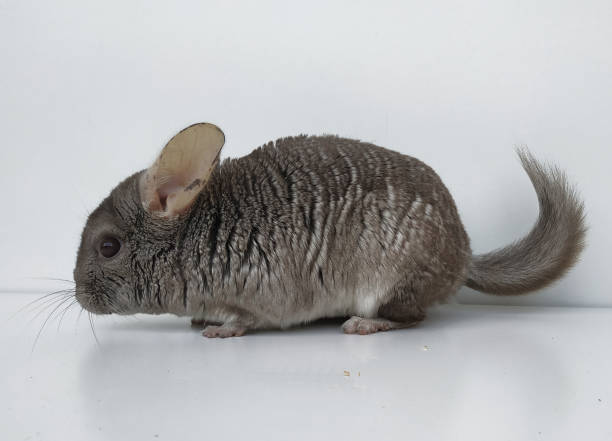
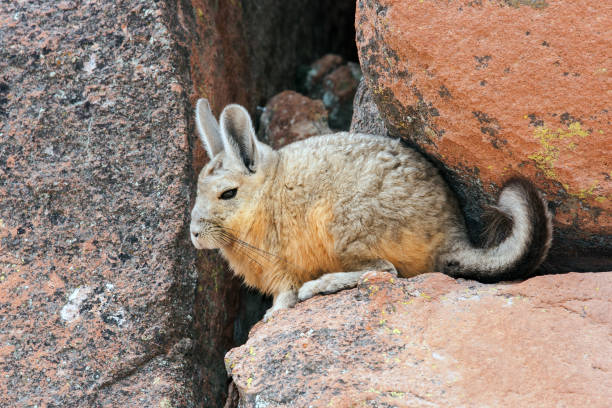
Fur, Form, and Features: Differentiating Viscachas and Chinchillas
While Viscachas and Chinchillas might share a general rodent appearance, their physical characteristics offer a fascinating array of distinctions that highlight their unique adaptations to their respective habitats.
Fur and Coat: One of the most noticeable differences between the two lies in their fur. Viscachas boasts a dense and soft fur coat, adapted to the harsh temperatures of high-altitude environments. Chinchillas, on the other hand, are renowned for their incredibly soft and dense fur, which has made them targets of historical fur trading due to their luxurious pelts.
Size Matters: In terms of size, Viscachas tend to be larger than Chinchillas. Their body proportions, including length and tail length, differ as well. These variations in size directly relate to their survival strategies and how they navigate their distinct habitats.
Tail Tales: Tail structure also distinguishes the two species. Viscachas typically possess a bushy tail that serves thermoregulatory purposes, while Chinchillas have a shorter, less conspicuous tail.
Coloration and Camouflage: The coloration of their fur further reflects their adaptations. Viscachas’ fur often blends with the rocky terrain of their habitats, providing effective camouflage. Chinchillas, known for their grayish fur, also demonstrate cryptic coloration to help them blend into their surroundings.
Adaptations in Action
These physical distinctions between Viscachas and Chinchillas underscore the marvel of adaptation. Evolution has crafted each species to suit their specific needs, enabling them to thrive in the high-altitude landscapes they inhabit. As we continue our journey, we’ll delve into the habitats and distribution of these two rodent wonders, uncovering how their chosen environments shape their behaviors and lifestyles.
Habitat and Distribution


High-Altitude Havens: Where Viscachas and Chinchillas Reside
The habitats and distribution of Viscachas and Chinchillas play a significant role in shaping their behaviors, interactions, and survival strategies. Despite both species inhabiting high-altitude landscapes, they have distinct preferences when it comes to their chosen abodes.
Viscachas’ Domain: Viscachas are known to thrive in the Andean mountain ranges of South America, particularly in countries like Argentina, Chile, Peru, and Bolivia. They often inhabit rocky terrains and high-altitude grasslands, showcasing their adaptation to rugged environments.
Chinchillas’ Realm: Chinchillas also call the Andes Mountains home, but their habitat preference differs slightly. They are often found in rocky crevices and burrows within the mountains, as well as in shrublands and grasslands at elevations of up to 5,000 meters.
Ecological Influences
The high-altitude habitats of both Viscachas and Chinchillas come with their own challenges and benefits. The thin air, extreme temperatures, and limited resources in these environments have molded these creatures into unique beings, each with their distinct strategies for coping with the demands of their habitats.
As we venture deeper into the differences between Viscachas and Chinchillas, we’ll explore their behaviors, from social interactions to feeding habits, shedding light on how their lives are intricately intertwined with the environments they inhabit.
Behavioral Differences
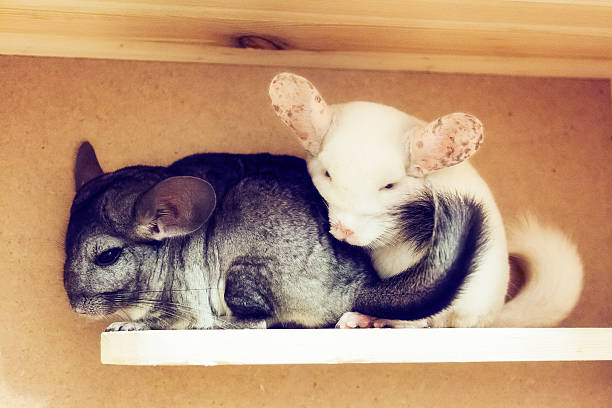
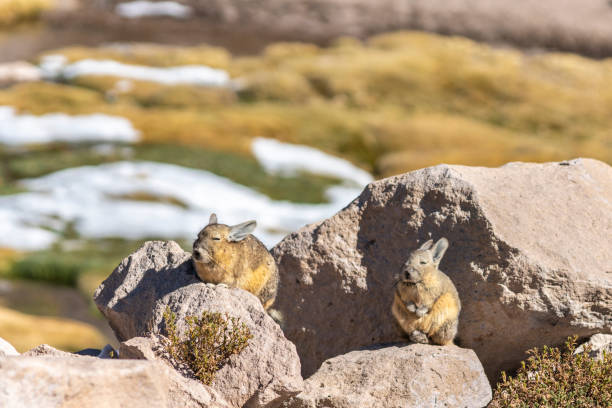
Social Dynamics: Viscachas and Chinchillas in Society
The social behaviors of Viscachas and Chinchillas provide fascinating insights into their interactions and adaptations within their high-altitude habitats.
Viscachas’ Social Structure: Viscachas are known for their propensity to form colonies. These colonies can vary in size and serve various functions, including protection, communal warmth, and resource sharing. Within colonies, Viscachas establish hierarchies that determine access to resources and mating opportunities.
Chinchillas’ Solitary Lifestyle: In contrast, Chinchillas are primarily solitary creatures. They tend to inhabit burrows individually and only interact during the mating season. This solitary lifestyle is a reflection of their adaptation to their rocky and crevice-ridden habitats, where individual territories provide optimal chances for survival.
Communication: Chirps and Silence
Communication methods also differ between the two species, reflecting their social dynamics and survival strategies.
Viscachas’ Vocalizations: Viscachas are vocal creatures, emitting a range of calls that serve various purposes. These vocalizations include alarm calls to alert the colony of potential threats, mating calls, and other forms of communication that help maintain cohesion within the group.
Chinchillas’ Silent Solitude: Chinchillas, on the other hand, are relatively quiet. Their communication methods are subtler and often involve scent marking to establish territorial boundaries and convey reproductive readiness.
Navigating Unique Social Worlds
The social behaviors of Viscachas and Chinchillas provide a captivating glimpse into the strategies these rodents employ to survive and thrive in their respective habitats. From forming colonies to embracing solitary lifestyles, their social dynamics are a testament to the intricate ways in which animals adapt to the challenges of their environments.
As we delve deeper into their differences, we’ll examine their dietary preferences and feeding habits, shedding light on their roles as primary consumers in their high-altitude ecosystems.
Dietary Distinctions
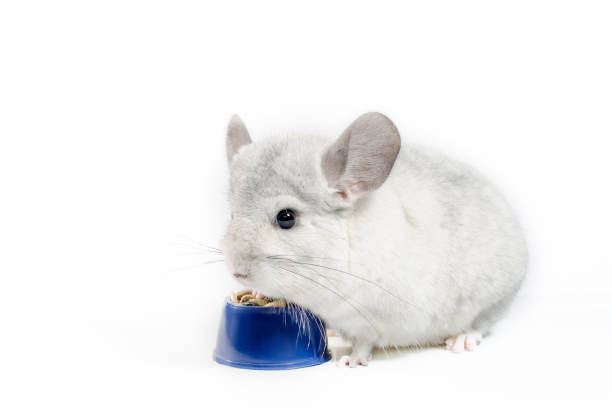

Foraging in the Heights: Viscachas and Chinchillas as Herbivores
The dietary habits of Viscachas and Chinchillas offer insights into their roles as primary consumers and how they contribute to the ecological balance of their high-altitude habitats.
Viscachas’ Herbivorous Lifestyle: Viscachas are specialized herbivores, primarily feeding on grasses, leaves, and other plant matter. Their diet is well-suited to the available resources in their high-altitude habitats, where plant growth can be challenging due to harsh conditions.
Chinchillas’ Leafy Preferences: Chinchillas also maintain a herbivorous diet, feeding on a variety of plant materials such as leaves, stems, and grasses. Their diet is adapted to their rocky habitats, where they can find a range of vegetation.
The Role of Primary Consumers
By consuming plant material, both Viscachas and Chinchillas play a crucial role in their ecosystems as primary consumers. Their feeding behaviors impact plant growth, nutrient cycling, and the availability of resources for other species.
Vegetation Control: Grazing by Viscachas and Chinchillas helps prevent the overgrowth of plants, maintaining a balance in vegetation density and species composition.
Nutrient Cycling: Through their feeding and subsequent waste deposition, these rodents contribute to nutrient cycling, ensuring a continuous flow of nutrients through the ecosystem.
Guardians of the Ecosystem
Viscachas and Chinchillas, as primary consumers, demonstrate the intricate relationships between different trophic levels in their ecosystems. Their dietary habits not only sustain them but also influence the health and dynamics of the high-altitude habitats they inhabit.
As we approach the conclusion of our exploration, we’ll delve into the importance of conserving these unique rodent species and the challenges they face in their high-altitude environments.
Conservation and Importance


Guardians of the Altitudes: Challenges and Preservation
The high-altitude ecosystems where Viscachas and Chinchillas reside are facing numerous challenges, underscoring the importance of conservation efforts to protect these unique rodent species and their habitats.
Habitat Loss: Urbanization, agricultural expansion, and infrastructure development encroach upon the natural habitats of Viscachas and Chinchillas, leading to habitat fragmentation and loss.
Climate Change: Rising temperatures and altered precipitation patterns due to climate change impact the availability of food and water resources in their high-altitude environments.
Predation and Disease: Introduced predators and diseases threaten these species, as they lack natural defenses against such threats.
A Shared Responsibility
The conservation of Viscachas and Chinchillas goes beyond safeguarding two unique species. It’s about preserving the delicate balance of their ecosystems and maintaining the rich biodiversity of high-altitude environments.
Research and Monitoring: In-depth research and ongoing monitoring are essential to understand the population trends, behaviors, and health of Viscachas and Chinchillas.
Habitat Protection: Establishing protected areas and promoting sustainable land use practices are critical steps to ensure the preservation of their habitats.
Community Involvement: Engaging local communities in conservation efforts is crucial for long-term success, as their support can drive positive change for these species.
Upholding Ecosystem Harmony
Viscachas and Chinchillas play integral roles in their ecosystems, and their preservation is a testament to our commitment to the interconnectedness of all life forms. By embracing the responsibility to protect these rodent wonders, we contribute to the health and resilience of the natural world as a whole.
In our final section, we’ll reflect on the journey of understanding the differences between Viscachas and Chinchillas and how it deepens our appreciation for the intricate tapestry of life on Earth.


Final Thoughts
In the high-altitude landscapes of the Andes, Viscachas, and Chinchillas unveil the wonders of evolution, adaptation, and ecological interdependence. By exploring the distinctions between these two rodent species, we have journeyed into the heart of their habitats, behaviors, and roles within their ecosystems.
From the taxonomy that traces their evolutionary paths to the adaptations that shape their survival strategies, Viscachas and Chinchillas exemplify the diversity and ingenuity of life on Earth. Their contrasting physical characteristics, social behaviors, dietary preferences, and habitats serve as a reminder that each species has found its unique way to thrive in the face of challenges.








